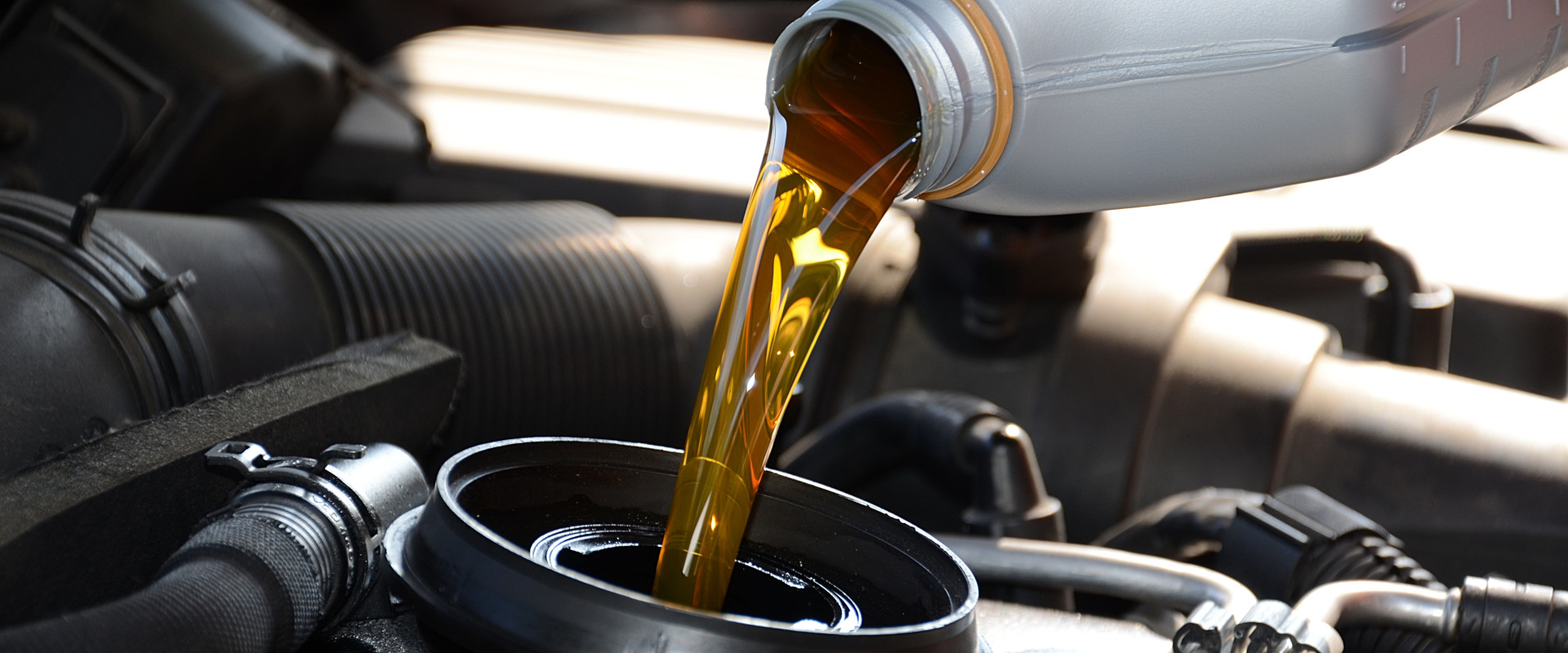
Taking Care Of Your Vehicle
We all want our vehicles to last well beyond the lifetime of their cost.
Hoping that the money we spent was worthwhile. No matter how much you spent or didn’t spend when you practice good basic car maintenance your vehicle will last. Like any other habit, good or bad, it starts with a routine. Start out by making a list. What are things that you know you need to be taking better care of, and pay more close attention to in your vehicle? Write these thoughts out, and then form a list. So, now- you’re making a list. You’re checking it twice. You going to find out that this is not a Christmas song, but rather a way of building a healthy routine. Once you have this list created. You need to consider if these are daily or weekly tasks - or further out. (Monthly or annually.) Once you have this, once again you’re making your list, you’re checking in twice, you’ve already found out that it’s nice - so it’s now time to put it into practice. Here are some everyday tips on keeping your car in good daily and weekly condition that we’ve come up with. Consider these tasks to keep your car up and running for a long time. Waste not. Want not.
Tip For Daily Care
Take everything out of your car that is not needed.
Excess materials cause clutter, distraction, and can be unsafe if defensive driving is necessary or cause or add to injury during an accident. To keep your car nice and tidy, dispose of your trash! Trash can be daily or weekly depending on conditions such as allergies or drive through meals. Like excessive materials, garbage can also cause clutter, distraction, create stress, and can also cause sickness. Garbage left in a vehicle during long periods of time becomes susceptible to weathering conditions. Hot and cold. Luke and Skywalker. I mean lukewarm and muggy. The perfect place for bacteria to form, that include spores, molds, and fungus. The dust alone that collects in a car over a few days, can cause respiratory issues.
Pro-Tip: Keep small bags, or reuse plastic shopping bags for as garbage bags. You can store extras in your car in an area of your choice. Either a seat pouch or a glove compartment is a better option to store such items, rather than the trunk of your car so that they are readily accessible. When you have to fill up, dispose of it, for a more controlled way of handling garbage. Place a plastic bag inside an opening and sealing the container, such as a cereal or sugar plastic container. This way you can close or open the container if needed, and if the container falls over, the garbage does not spill out into your car.
Tips For Weekly Care
#1. Clean your windshield.
If available, use the ready squeegee when filling up, or have a glass cleaner and a micro cloth stored in your cargo area for quick spot cleaning.
#2. Tire pressure.
Be sure you properly check your tire pressure and ensure the proper amount of air, (known as PSI), is injected into them. If you don’t know the proper amount of air that goes in your tire, the amount of air is found in 2 places. You can look at the wall of the tire, or on the inside side of the driver's door panel. This is sometimes located on the inside side of the driver door, or the inside frame of the driver door. Another thing you want to do is to check your tire pressure early. The first time you drive for the day is the best time to check because in this way the tires will not be hot and expanded. You want them still cool so that you have an accurate reading of your tires.
Tips For Bi-Weekly or Monthly Care
Check your tire tread & all your fluid levels!!!
It’s important to check these as this can make or break your car.
#1. Check your tire tread.
The less amount of tread on the tire, the more unsafe it is. You can know it’s time to change your tires by giving it the “Penny test.” Take a penny and turn it until Lincoln's head is facing straight down. Place it between the treads of your tire. If the tread does not reach the top of his head then it's time to replace your tires. If it reaches the very top of his head then you have just enough tread left - indicating there's not much life left in the tire but are still ok to drive on. If the tread goes well over his head, then you're in an optimal range for the tire.
#2. Check your engine oil.
To check in engine oil, your car MUST NOT BE RUNNING.
Oil is what keeps your engine running smoothly. If there is not a consistent amount of oil in your engine it creates more stress on the engine parts and leads to a shorter lifespan, and if there is not enough oil in your engine, in the worst cases it will “Sling a rod,” Aka blowing up. It’s just as important to make sure that you don’t over-fill oil levels either. Too much oil and the engine parts cannot function adequately either. For the best readings of oil levels, ensure that you check your oil when your car is parked on level ground, and the engine has had several minutes to cool down. When traveling extensively letting the engine cool down is not avoidable, so still check it, but also check after you’ve reached your destination.
#3. Check your transmission fluid.
Your vehicle NEEDS to be running when checking your transmission. (The complete opposite of checking your oil.)
If levels are too low or too high the transmission cannot run properly. Just like oil, it’s important to check your transmission fluid levels. Car manufacturers are creating more and more transmissions that you no longer have to worry about maintaining your transmission fluid on a weekly or monthly basis. These are called CVT (Continuous Variable Transmission). If you don’t know if your car has a Continuous Variable Transmission, the first sign that they do is that these cars will not have a readily accessible dip stick to check your transmission with. They’re further tucked away within the engine and usually do not have an accessible dip stick that you can pull. Vehicles with CVT’s will need to have their transmissions flushed and refilled about every 2 years depending on your vehicle.
#4. Check your brake fluid.
Brake fluid is often overlooked for two reasons.
One, it’s a small rectangular container. Two, it’s not often needed to be filled or even topped off. But it should always be checked because it’s an important component of the brakes and without brake fluid, your car will not stop. So always keep it filled to the defined line, (and no more), on the container.
#5. Check your anti-freeze/coolant levels.
It’s very important to maintain the Anti-freeze/Coolant in your vehicle. It serves 2 purposes. It cools your vehicle, and then it keeps it from freezing over during cold weather.
#6. Check your windshield wiper fluid.
Filling up or topping off the windshield washer fluid is always a good habit. Checking the windshield washer fluid may not be the most important maintenance for your car, but it is one of the best preventative cares that you can do. The truth is that you don't always know when to anticipate a potential storm, muddy water from a leftover rainstorm or a kamikaze of bugs. There’s nothing more annoying than your windshield washer fluid going out when you have a hazy coated windshield.
Tips For Mileage-Based Care
Regardless of your make and model, there are a few universal mileage-based maintenance procedures.
#1. Change oil every 5,000 miles.
It used to be that most vehicles needed a regular oil change every 3000 miles. This isn’t the case for most cars any longer. Most modern vehicles now will not need to an oil change until they’ve gone at least 5,000 miles. Now, if you still own a car from the early 2000’s or well before this time, then you definitely should get an oil change within the recommended 3,000-mile increments.
Pro-Tip: If you have a vehicle with an oil leak, check your oil daily to ensure that enough oil stays in the engine until you can get it repaired.
#2. Rotate tires every 5,000 to 10,000 miles.
Rotating your tires prolongs their life. Keeping your tires rotated also keeps the car well balanced when driving resulting in having better gas mileage and a safer drive. It also saves you money on tires in the long run.
#3. Change air filter every 12,000 miles.
Most people have their air filter changed as they are getting an oil change, just to have it done so that they don’t have to worry about it later.
However, an air filter doesn’t have to be changed even as often as your oil does. Sometimes there are exceptions, such as extensive amounts of pollen, or smoking while in your vehicle. (This also devalues your vehicle - much less your health.) One can also change an air filter on their own, should they desire to. It’s a great way to save money! You would be surprised that most air filters are fairly easy to get to on most vehicles. And easier still is that they are easy to change for the most part. Any auto parts store will more than likely have the type you need, or you can always purchase an OEM part from your vehicle's manufacturer from a dealership.

